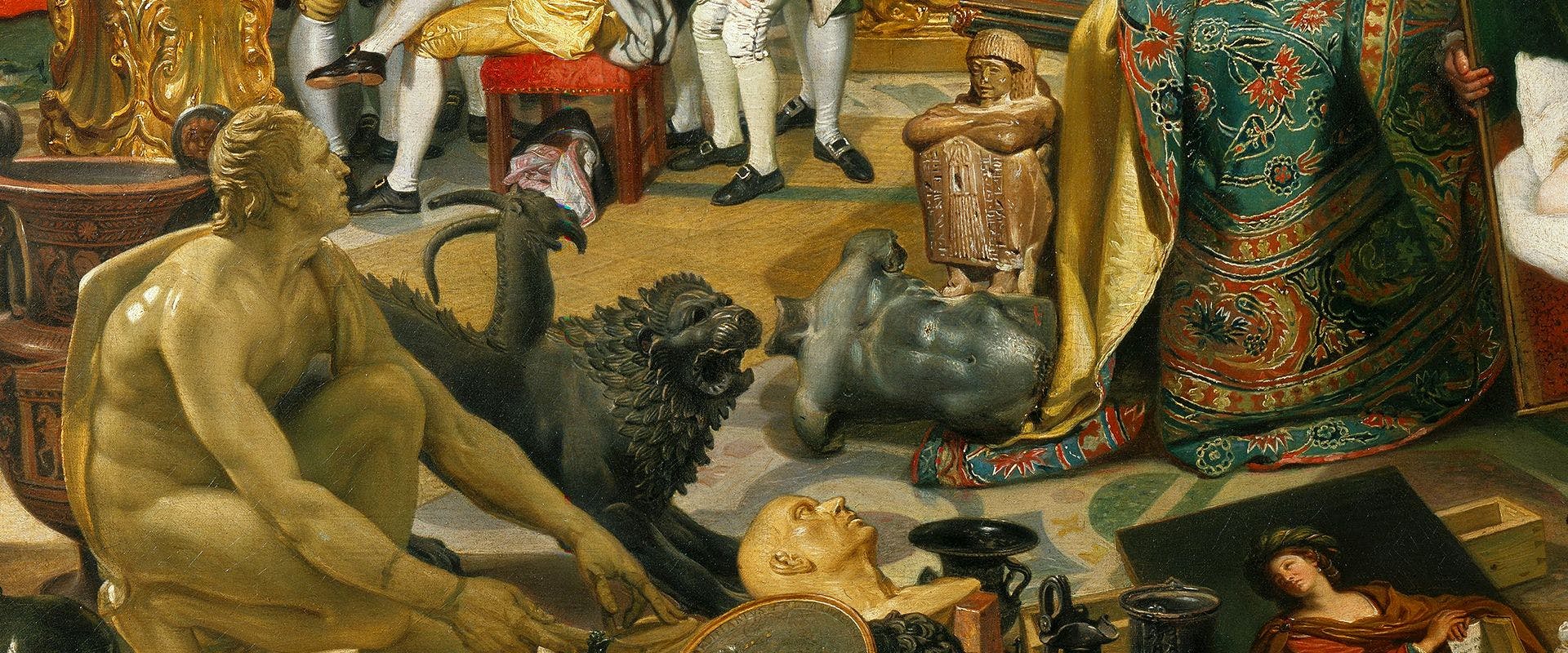A Pact for Archaeology: a Pact for Florence, for Italy and for Europe
A five-year agreement for the enhancement of the National Archaeological Museum in Florence
The agreement designed to enhance and promote the National Archaeological Museum of Florence will mean that as of 1 March 2018:
- every ticket to the Uffizi will also include free admission to the National Archaeological Museum (valid for five days from the date on which the ticket is used for admission to the Uffizi). The Passepartout annual season tickets to the Uffizi (50 euro) and to the Gallerie degli Uffizi's complete network of museums comprising the Uffizi, the Pitti Palace and the Boboli Garden (70 euro) will not only entitle the holder to priority admission to the Uffizi for 365 days but also include free admission to the Museo Archeologico Nazionale di Firenze;
- to make up for the archeological museum's missed ticketing income, the Gallerie degli Uffizi will be earmarking 2.5% of the Uffizi's ticketing revenue (in other words the revenue from all tickets to the Galleria delle Statue e delle Pitture and from the annual season tickets mentioned above) for investments in the National Archaeological Museum ranging from the restoration of archaeological finds to architectural and infrastructural work, new layouts and publications, exhibitions and research projects;
- the two museums will engage in scholarly cooperation in the fields of research and dissemination with coordinated and co-organised conferences, lecture cycles and educational workshops, with exhibitions on archaeological themes in the Gallerie degli Uffizi and exhibitions on the fortunes of Greek, Egyptian, Etruscan and Roman art at the National Archaeological Museum of Florence;
The enhancement pact, which has a duration of five years and is renewable thereafter, is inspired by a vision for the present and the future, but more than anything, it is rooted in the two institutions' shared history. In that connection it is worth pointing out that the first works of art to be hosted in Vasari's recently completed complex in the late 16th century were the Classical sculptures from the Medici collections. Thus it is perfectly logical to argue that archaeology and the rediscovery of the ancient world were the very "seeds" from which today's museum has grown. For centuries the Galleria delle Statue degli Uffizi – which has only recently regained its former name – was, in its visitors' eyes, first and foremost a museum of antiquities. Its icon was the Medici Venus, the Hellenistic statue that continues to this day to take pride of place in the centre of the Tribune, and it was only in the early 20th century that her sceptre was usurped by another Venus, the Venus of Botticelli, in the imagination of the gallery's growing number of visitors.
As Johann Zoffany's painting The Tribuna (at Windsor Castle) so effectively conveys, the Uffizi for 18th century visitors was not simply a picture gallery but also a museum in which they could admire Etruscan buccheri, figured cases, small urns, Egyptian statues and late Roman silverware, in addition to the large Roman statues that gave the museum its name. The archaeological nature of the Uffizi was radically transformed during the reorganisation of Florence's museum system in the wake of Italy's unification in the 19th century. The Egyptian Collection had already been hived off in the final years of the Grand Duchy of Tuscany in order to found an independent museum, but it was not until the 1870s that such unquestioned masterpieces as the Chimera, the Portrait Statue of Aule Meteli (better known as the Arringatore), Minerva, the Idolino, the François Vase, the bronze head of Antinous and other works of Classical sculpture left the exhibition halls of the Uffizi.
Their first home was the Cenacolo del Fuligno where the grand ducal antiquities spent roughly a decade before moving, between 1880 and 1881, to their current home in the Palazzo della Crocetta, where the collection grew enormously thanks to the acquisition policy encouraged by the House of Savoy and to the archaeological digs that had begun to be conducted systematically.
Thus from the outset the Museo Archeologico has hosted three fundamental collections: the old grand ducal collections (almost all of which were once housed in the Uffizi), the Egyptian collections, and the acquisitions purchased after the unification of Italy, supplemented over the years by finds from modern excavation campaigns. The explanation, indeed the very raison d'être for today's pact lies precisely in the memory of these common roots shared by the Galleria degli Uffizi and the Museo Archeologico Nazionale – the latter, when all is said and done, being born of a rib of the former.
This initiative kicks off a season of far closer cooperation between the two institutions, which will have a positive impact (and not merely in financial terms) and which will allow us both to impart a fresh boost to scholarship and, at the same time, to acquaint a far broader audience with the story of the discovery (and rediscovery) of the ancient world through targeted exhibitions and conferences.
